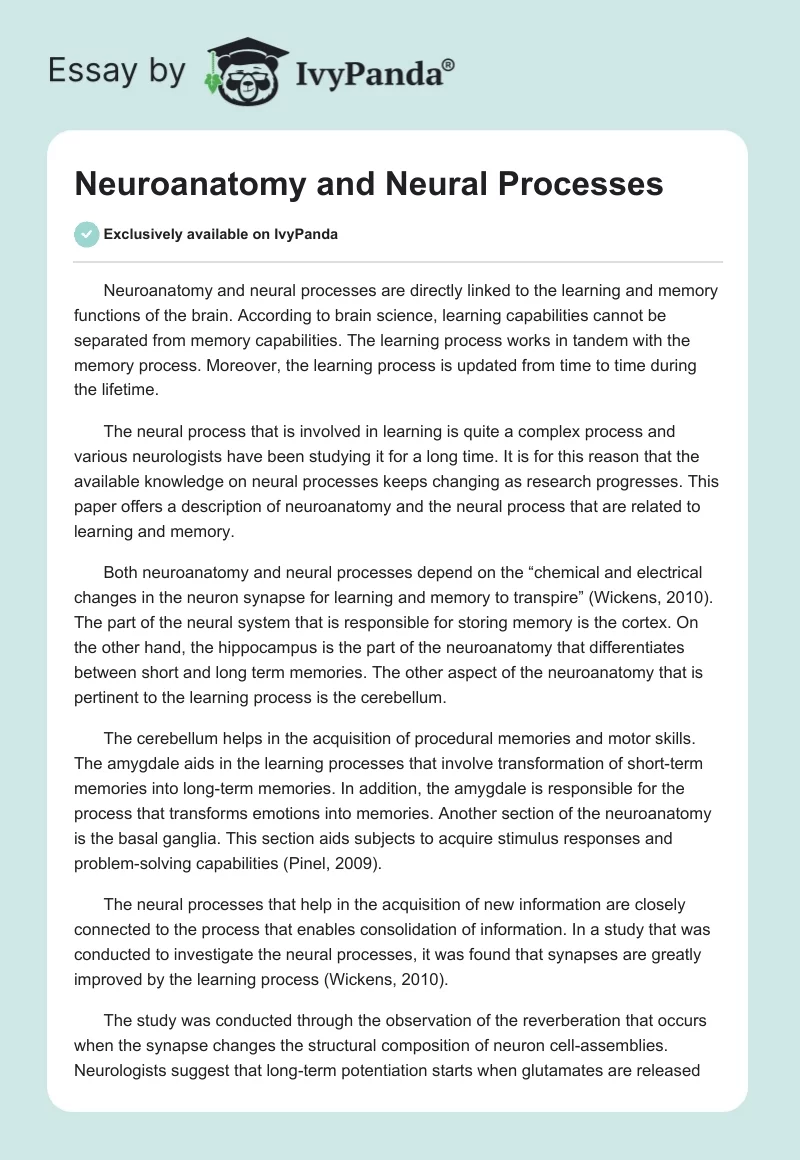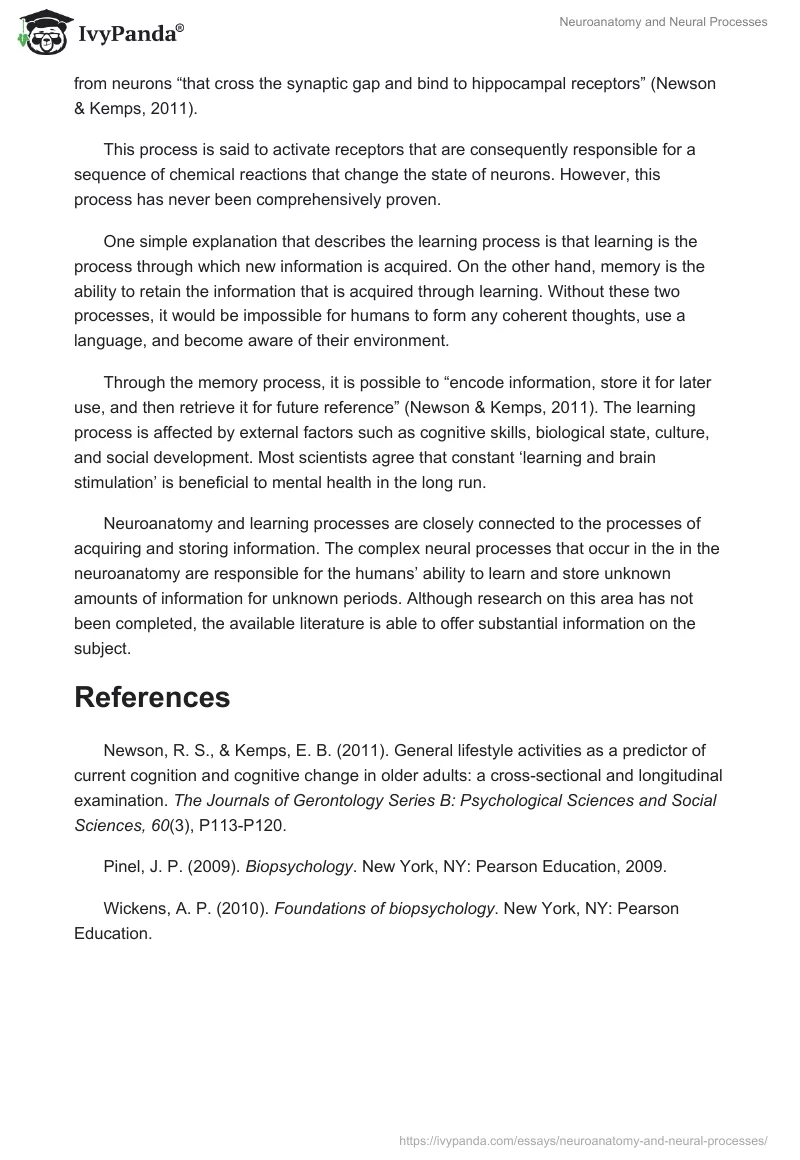Neuroanatomy and neural processes are directly linked to the learning and memory functions of the brain. According to brain science, learning capabilities cannot be separated from memory capabilities. The learning process works in tandem with the memory process. Moreover, the learning process is updated from time to time during the lifetime.
The neural process that is involved in learning is quite a complex process and various neurologists have been studying it for a long time. It is for this reason that the available knowledge on neural processes keeps changing as research progresses. This paper offers a description of neuroanatomy and the neural process that are related to learning and memory.
Both neuroanatomy and neural processes depend on the “chemical and electrical changes in the neuron synapse for learning and memory to transpire” (Wickens, 2010). The part of the neural system that is responsible for storing memory is the cortex. On the other hand, the hippocampus is the part of the neuroanatomy that differentiates between short and long term memories. The other aspect of the neuroanatomy that is pertinent to the learning process is the cerebellum.
The cerebellum helps in the acquisition of procedural memories and motor skills. The amygdale aids in the learning processes that involve transformation of short-term memories into long-term memories. In addition, the amygdale is responsible for the process that transforms emotions into memories. Another section of the neuroanatomy is the basal ganglia. This section aids subjects to acquire stimulus responses and problem-solving capabilities (Pinel, 2009).
The neural processes that help in the acquisition of new information are closely connected to the process that enables consolidation of information. In a study that was conducted to investigate the neural processes, it was found that synapses are greatly improved by the learning process (Wickens, 2010).
The study was conducted through the observation of the reverberation that occurs when the synapse changes the structural composition of neuron cell-assemblies. Neurologists suggest that long-term potentiation starts when glutamates are released from neurons “that cross the synaptic gap and bind to hippocampal receptors” (Newson & Kemps, 2011).
This process is said to activate receptors that are consequently responsible for a sequence of chemical reactions that change the state of neurons. However, this process has never been comprehensively proven.
One simple explanation that describes the learning process is that learning is the process through which new information is acquired. On the other hand, memory is the ability to retain the information that is acquired through learning. Without these two processes, it would be impossible for humans to form any coherent thoughts, use a language, and become aware of their environment.
Through the memory process, it is possible to “encode information, store it for later use, and then retrieve it for future reference” (Newson & Kemps, 2011). The learning process is affected by external factors such as cognitive skills, biological state, culture, and social development. Most scientists agree that constant ‘learning and brain stimulation’ is beneficial to mental health in the long run.
Neuroanatomy and learning processes are closely connected to the processes of acquiring and storing information. The complex neural processes that occur in the in the neuroanatomy are responsible for the humans’ ability to learn and store unknown amounts of information for unknown periods. Although research on this area has not been completed, the available literature is able to offer substantial information on the subject.
References
Newson, R. S., & Kemps, E. B. (2011). General lifestyle activities as a predictor of current cognition and cognitive change in older adults: a cross-sectional and longitudinal examination. The Journals of Gerontology Series B: Psychological Sciences and Social Sciences, 60(3), P113-P120.
Pinel, J. P. (2009). Biopsychology. New York, NY: Pearson Education, 2009.
Wickens, A. P. (2010). Foundations of biopsychology. New York, NY: Pearson Education.


